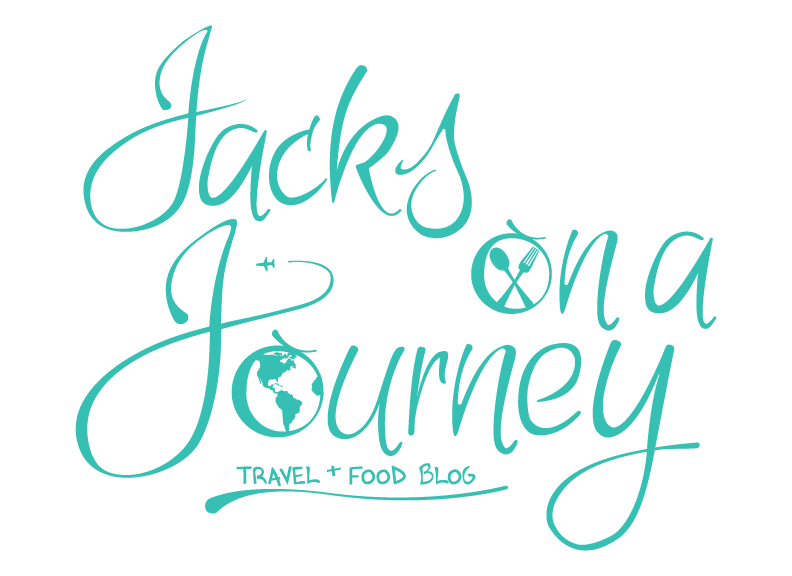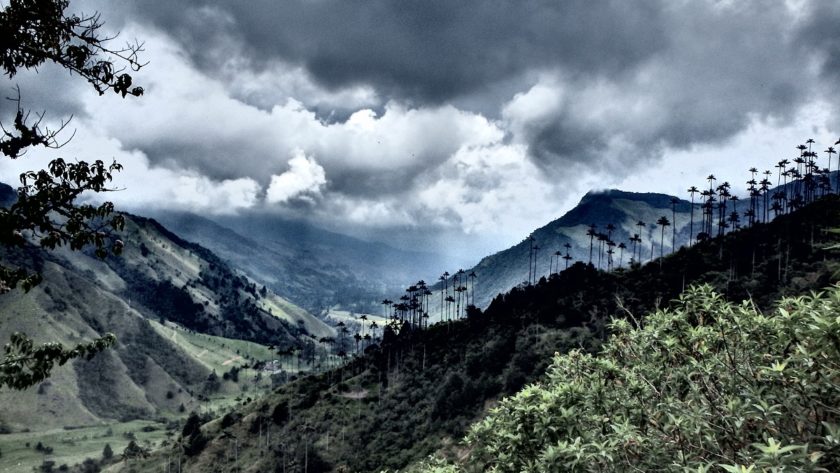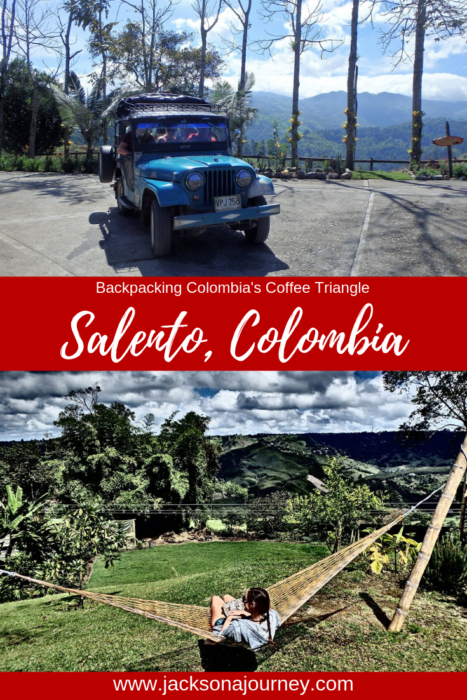Colombia‘s coffee is well-known (and loved) by caffeine addicts around the world. Backpackers to South America should definitely consider a stop to the country’s rural coffee region. And this is coming from a non-coffee drinker!
This western region of the Andes between Armenia, Pereira and Manizales is also known as Colombia’s coffee triangle. There are many small pueblos in this area with Salento being one of the most popular among travellers, for good reason.
This charming colonial town is nestled within lush, rolling hills surrounded by mountains. It is a sea of green! And a welcome break from city life if passing through Bogota and Medellín.

What to do
Visit a Coffee Farm
Not surprisingly, the main thing to do in Colombia’s coffee region is to: visit a coffee farm! However deciding on which farm to visit can be a challenging decision.
We tried researching online and it seemed most had decent-ish reviews. So we decided to go through one recommend by our hostel with some of our new travel buddies.
Tip: If you can rally a few travellers together then be sure to ask about group discounts! For 8 of us we managed to negotiate a small discount from 12,000 COP ($4 US) to 10,000 COP each.
Tip II: We would recommend inquiring about scheduled tour times before arriving at a farm to avoid disappointment, especially during quiet season.
Another reason we chose the recommended coffee farm was it was only a 30 minute walk away. Meaning we did not need to pay for a collectivo (you have to celebrate even the minor budget-saving victories!).
La Arzacia is a relatively small, family-run farm and prides itself on it’s use of organic pesticides and fertilisers.
As part of the tour we were each given a stylish wicker basket in which to collect ripe fruit along the way. However for us it was just for show since it was not harvesting season in October. We maybe found two or three… No free labour from us sadly!
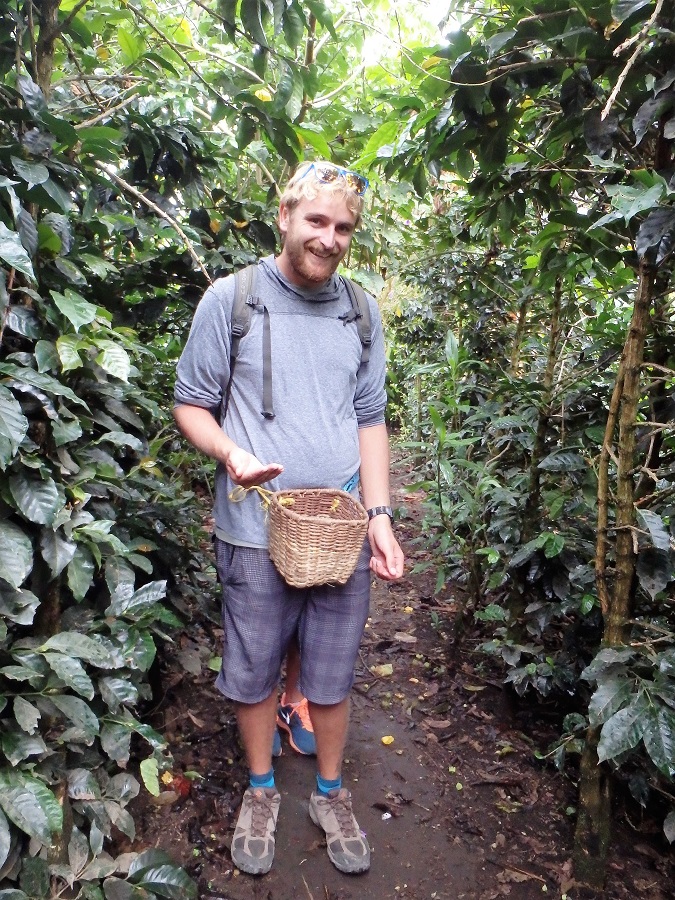
It is enlightening to learn how much work goes into producing a cup of coffee. I have never appreciated or even thought about it before.
First we learned that what makes the coffee plant thrive in this region is it’s climate. Warm and wet with rich volcanic soil is what enables the growth of such a superb quality product.
The process
Then the farmer explained about the germinating and harvesting processes. He also showed us their home-made, organic pesticide: containers of a bright red vinegar concoction draped around the plants to attract and trap pests. This is done during the final ripening process when the fruit turns from red to yellow.
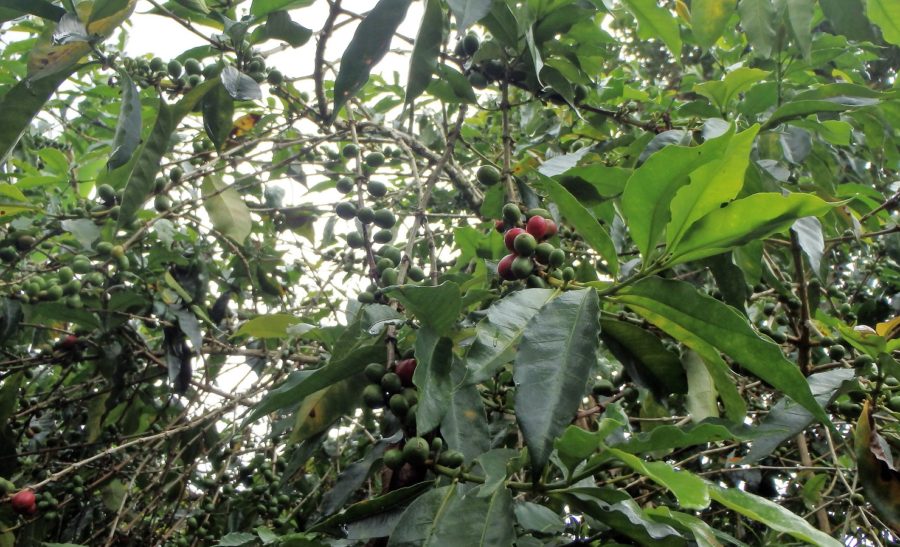
Once the ‘cherries’ turn yellow, they are then picked, peeled, dried and peeled again! Next up is where the magic happens when they are roasted to perfection, resembling the stereotypical coffee bean most of us are familiar with.
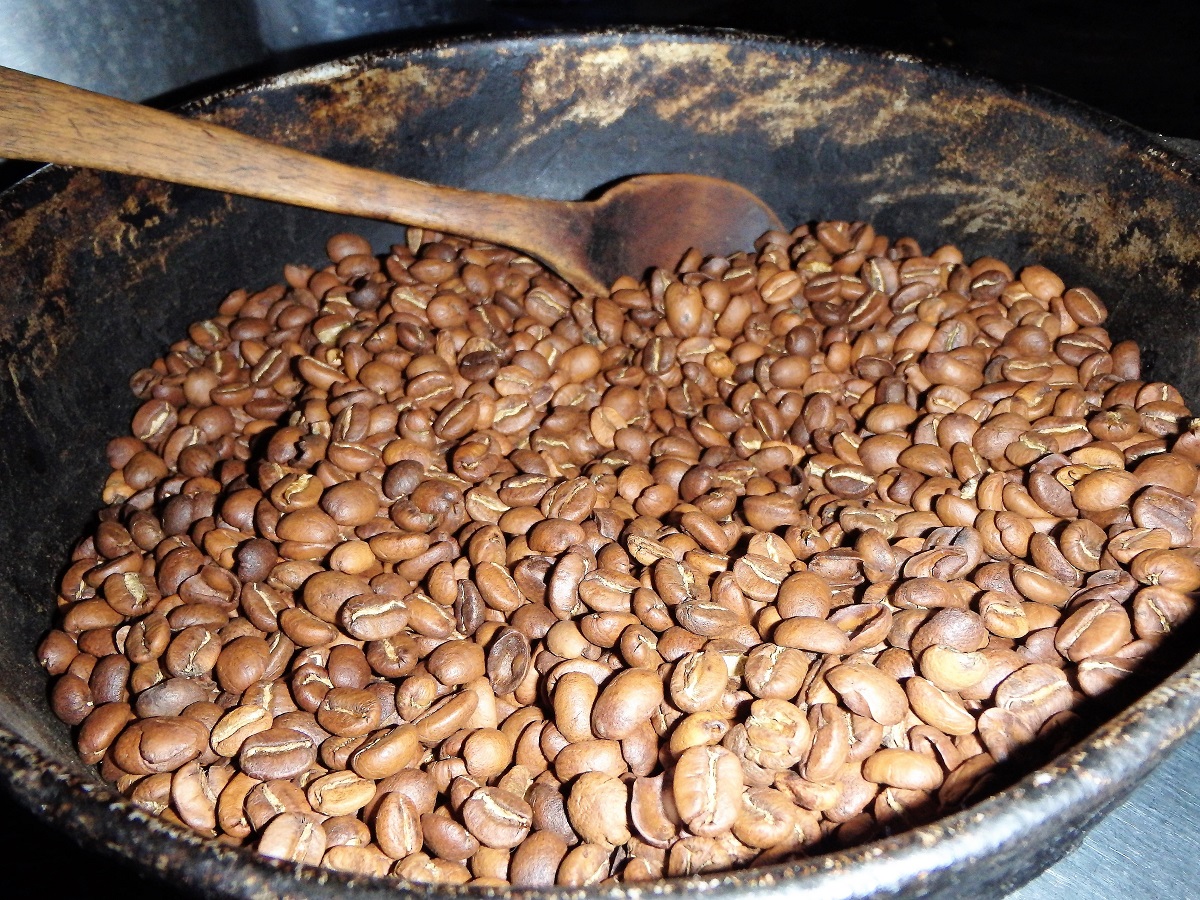
Of the beans produced here, the farmer advised that there are two different grades: first class and second class.
First class beans are the best quality and make the most money, so these are typically exported to other countries. Second class beans, being of a lower quality, are typically kept for consumption in Colombia, which is pretty sad.
At the end of our hour tour we were treated to a cup of La Arzacia’s ‘first class’ coffee. I already mentioned I am not a coffee drinker, but when in Rome! I was genuinely surprised by how good it was. Rhys the coffee fiend, of course, loved it.
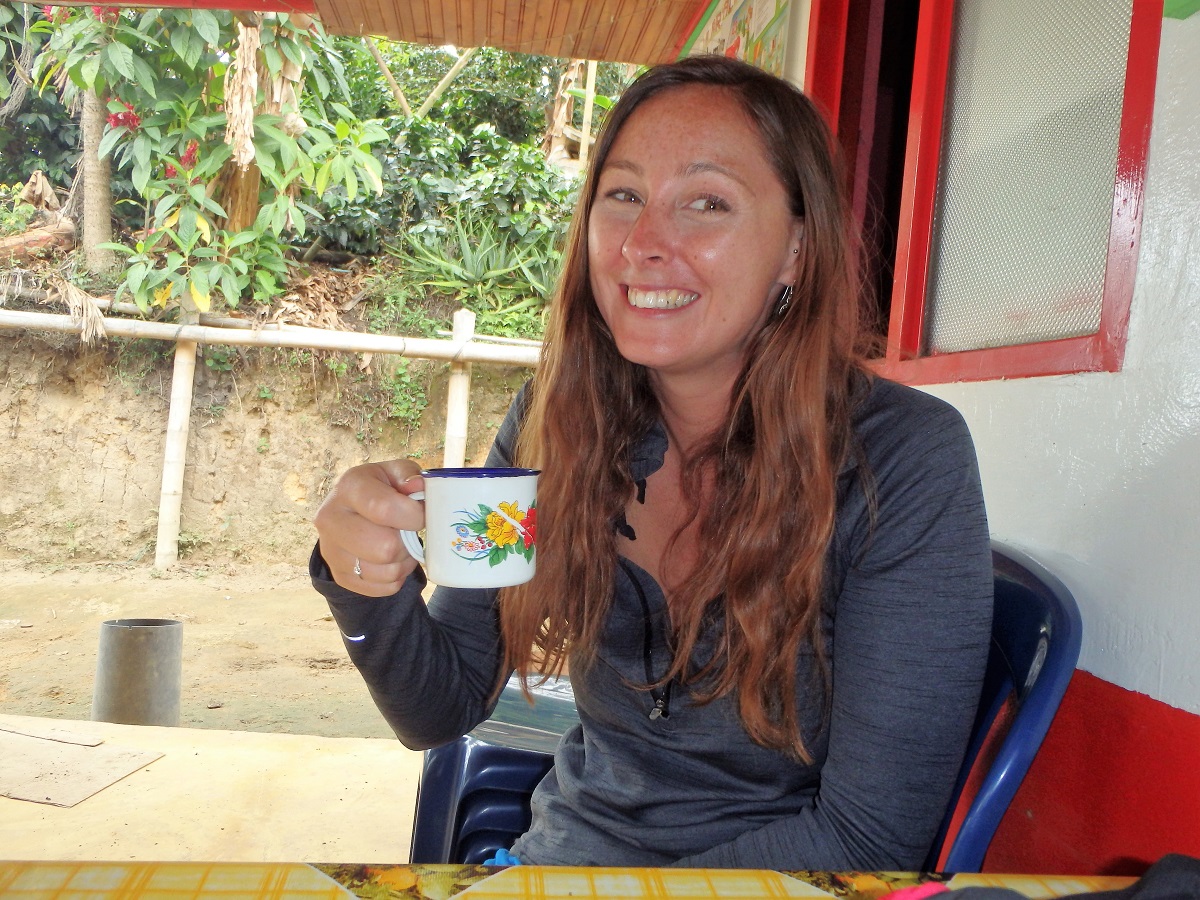
We even ended up buying a bag of beans to go, with Rhys vowing to find room for them in our already-stuffed backpacks.
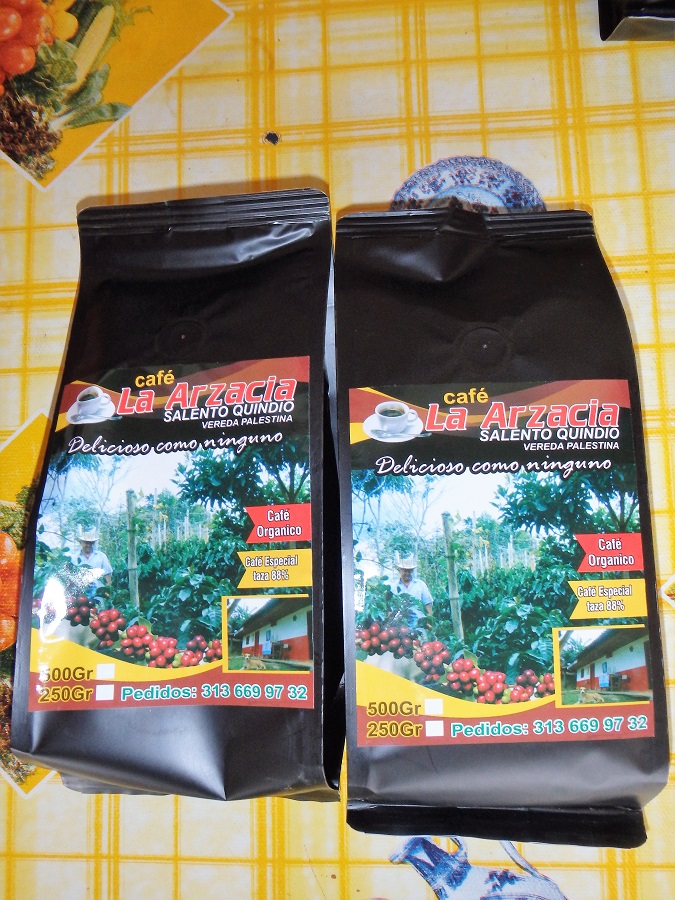
The beans weren’t ‘Colombia cheap’ at 12,000 COP ($4 USD) a bag, but how often will you be able to buy authentic coffee directly from the farm where it was grown? Plus the money goes directly to the farmer.
Hike Valle de Cocora (Cocora Valley)
A great, budget adventure for backpackers!
This hike is a solid way to get your blood pumping and your leg muscles working. We didn’t know much about the trek before arriving in Salento and definitely underestimated the challenge. Heads up: It takes about 5 hours!
The weather is quite temperamental in Salento (think back to the comment on the warm and wet climate), so when we woke on our first morning to clear, sunny skies we knew we had to seize our opportunity to hike the Cocora Valley.
Again we did this as a kind of group activity with other travellers from our hostel.
This actually spared us the effort of walking into town to find a collectivo. As we were already a full car-load the hostel called to have us collected and driven 15 minutes to the trail head. We paid around $3,000 COP ($1 USD) each. Win!
Note: Collectivos will only drive you to your destination once they are able to fill their vehicle.
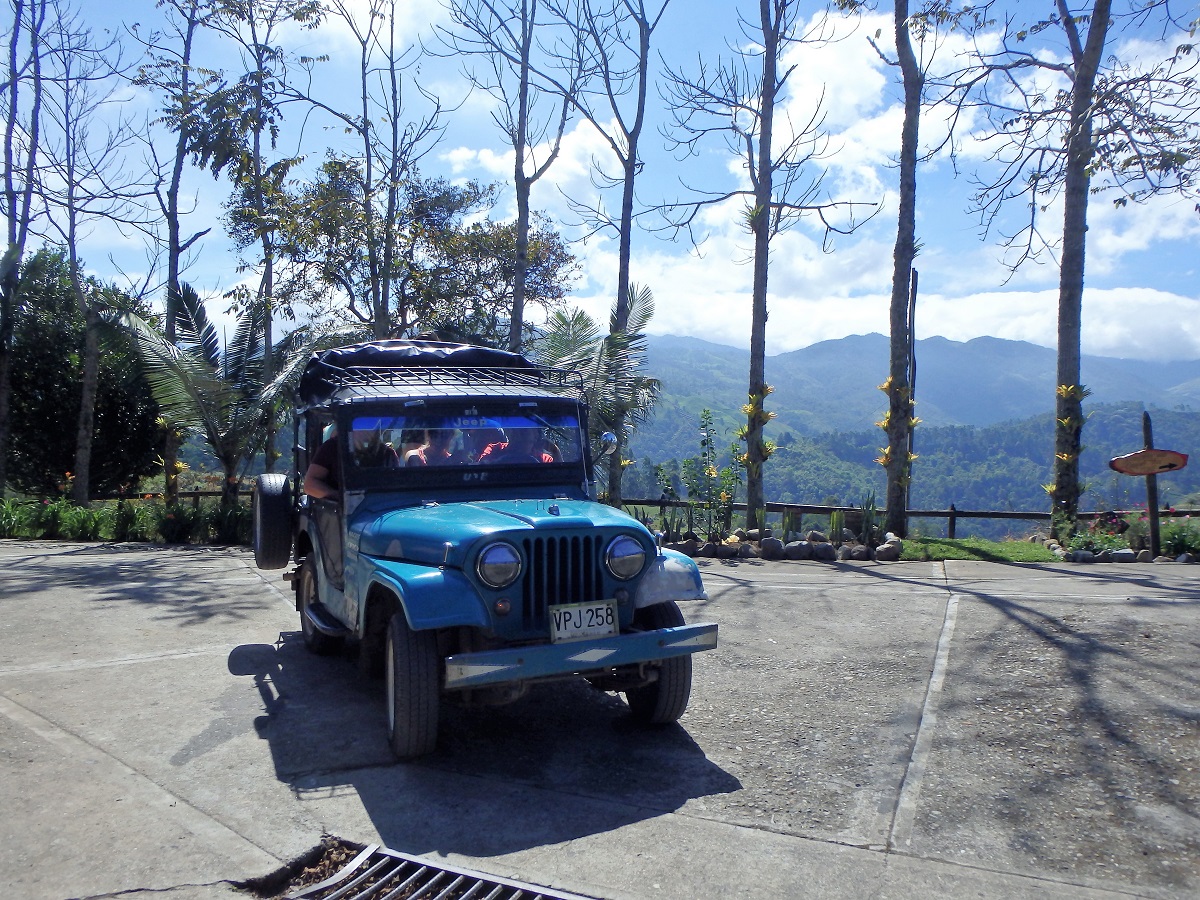
We were all a little nervous of the trail route having spoken to other backpackers, many (if not most) of whom had somehow managed to get lost. To avoid the same mistakes we brought a basic, and not very good, map but it seemed to do the trick!
Tip: Download Maps.me. This is an app that you need regardless to where you are travelling. It works offline and often has marked trails mapped out. Oh, and it’s free!
The hike
The start of the hike was very placid. We followed a trail down into the valley, passing by wide open fields which eventually gave way to more dense forest.
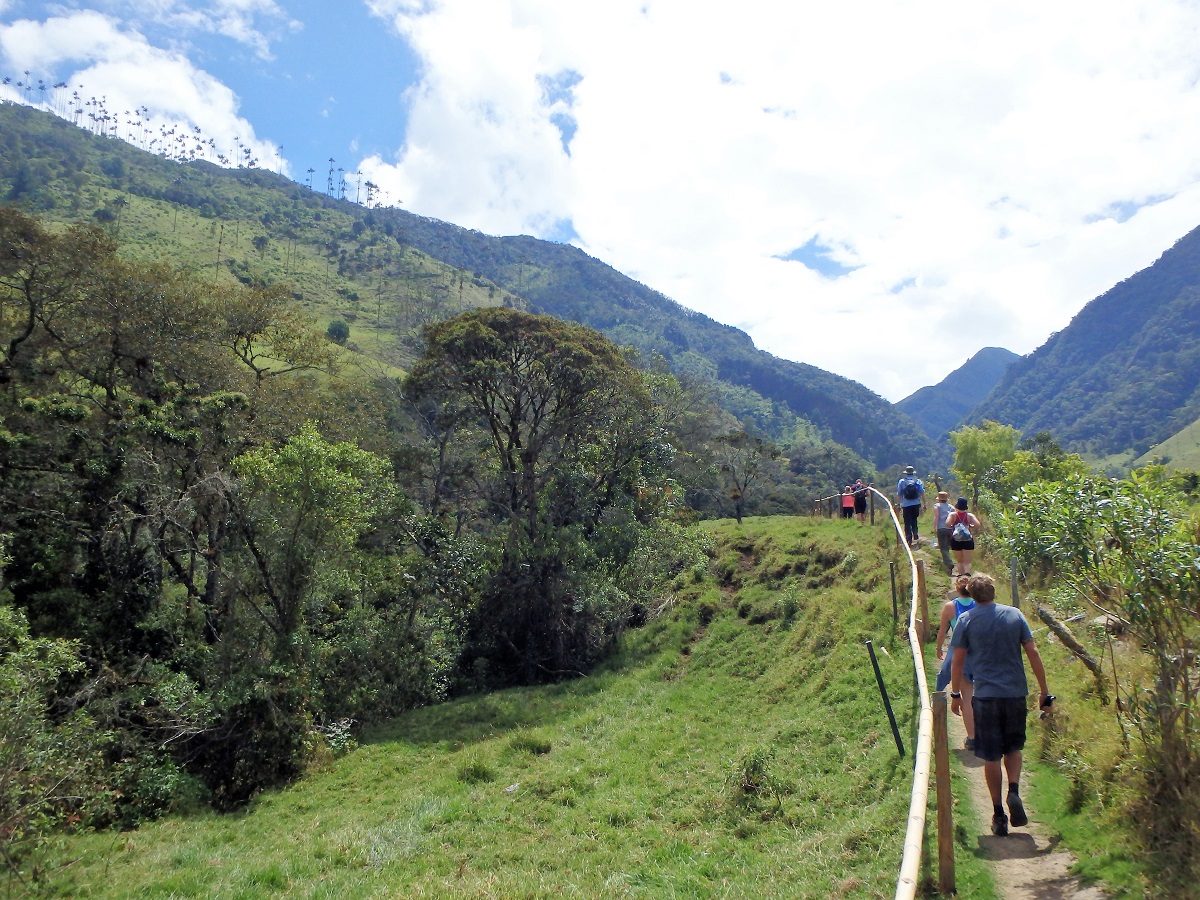
The shady trees were a welcome relief from the scorching sun. Shortly later they became a good buffer and shelter from the drizzling rain.
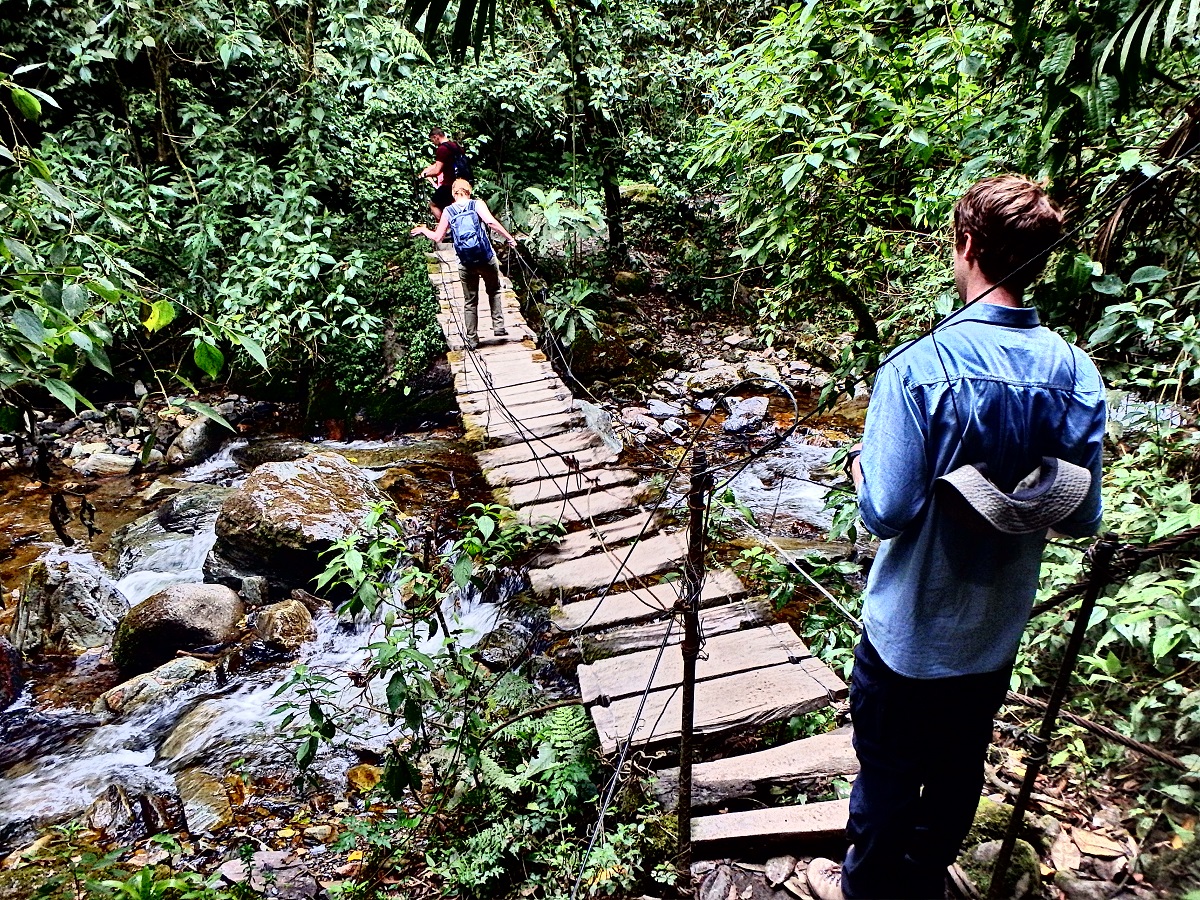
It took us over 2 hours to reach the half-way point of Acaime, a great place to take a breather. Here there was a stall selling traditional Colombian hot chocolate with cheese.
*If you haven’t yet been acquainted with the wonders of Colombian cuisine then I recommend checking out some of our other blogs on the country.
In hindsight, we should have totally brought more – some – sustenance to re-fuel. We were pretty hungry and real food was a long way away. At least there was plenty of wildlife around to distract us…
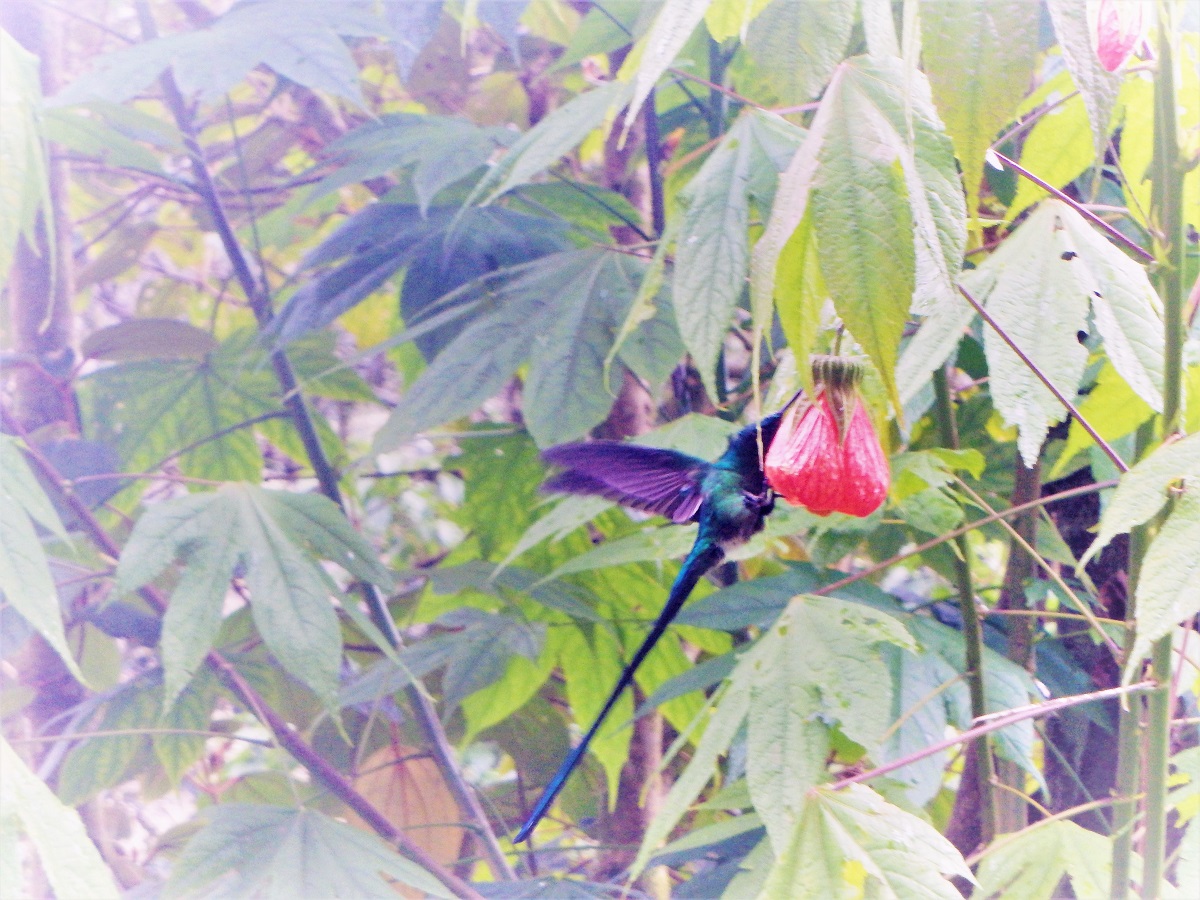
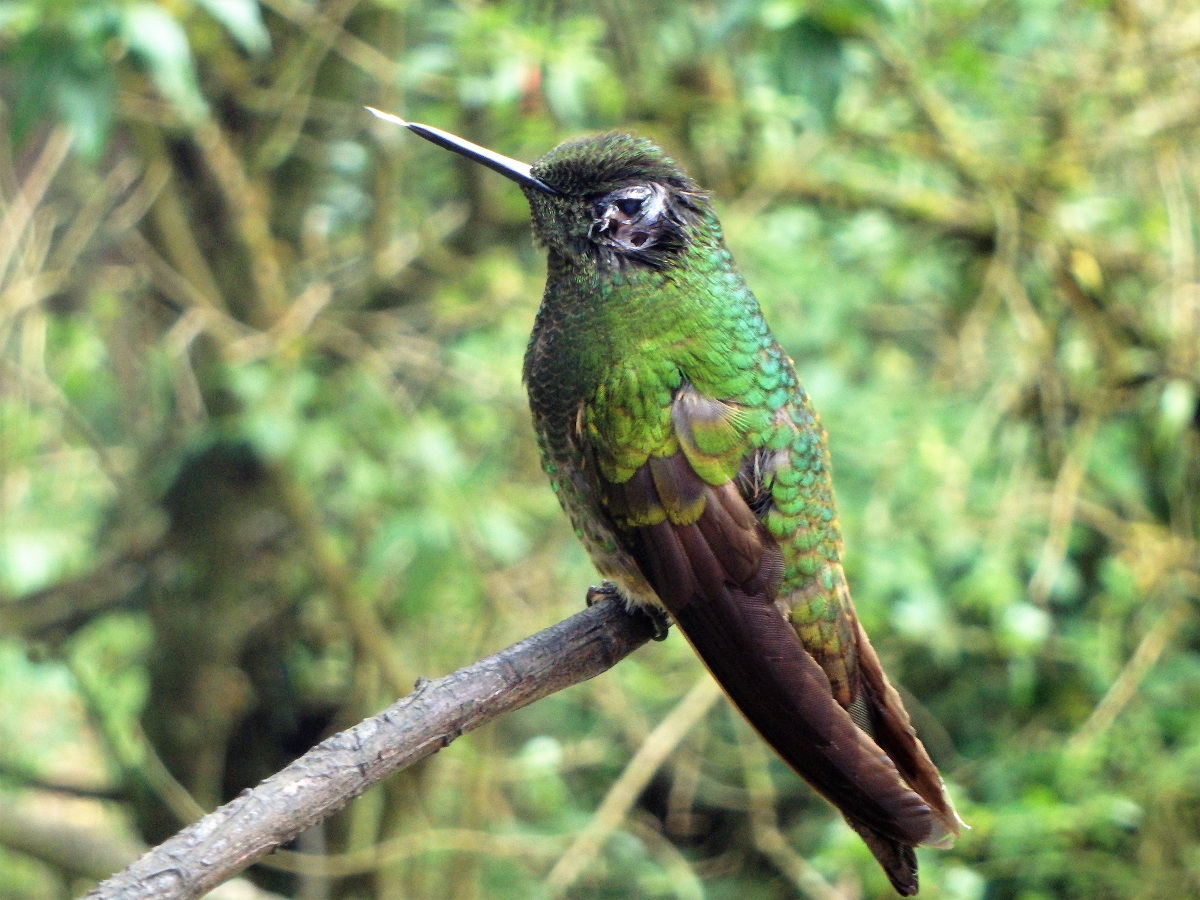
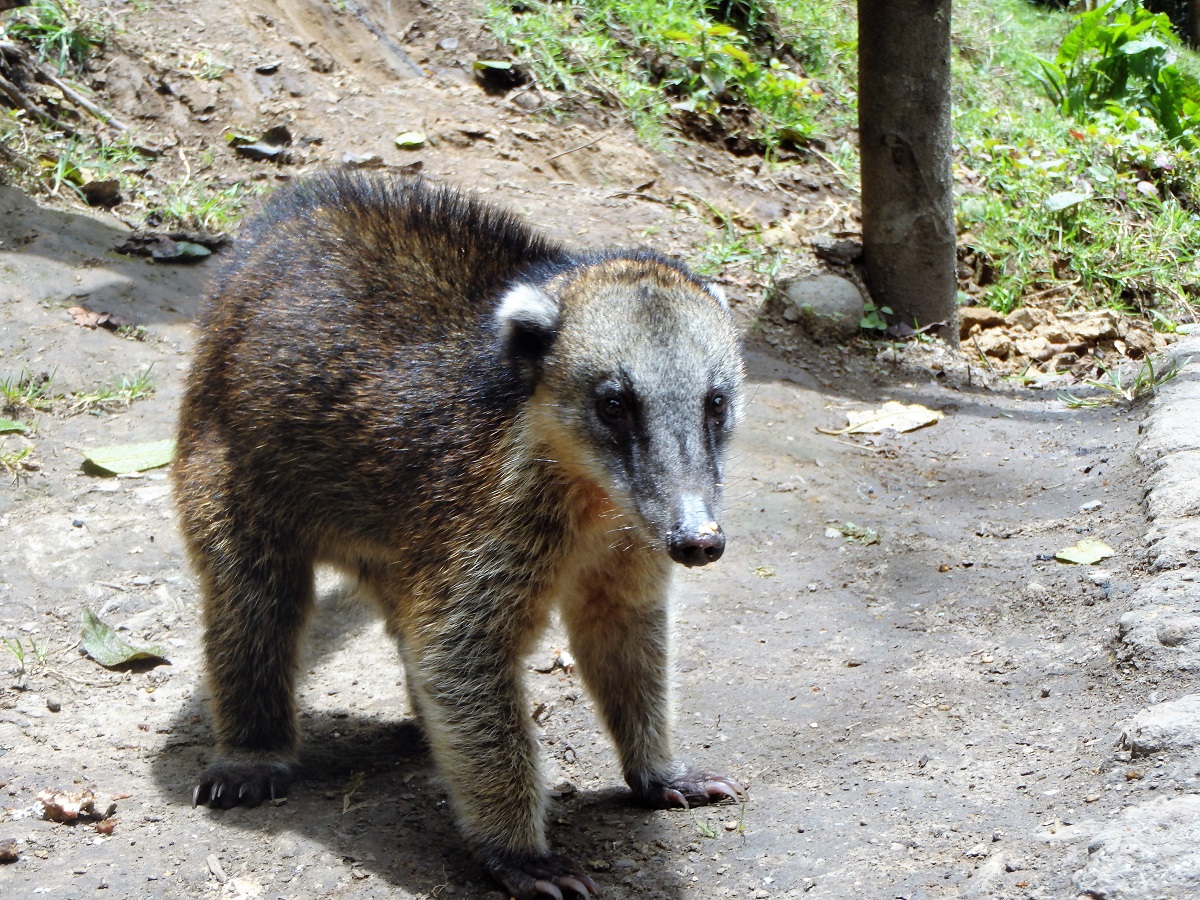
After Acaime, it got hard. We were aware there would be a bit of an uphill grind but we hadn’t realised we would be climbing a mountain! So uncharacteristically unprepared for us (I like to think), ha!
To be fair, we could have been fitter. The other couple with us were fine. But I still like to give a nod to the altitude. And the fact that it was steep walk for a solid hour to reach the top from Acaime.
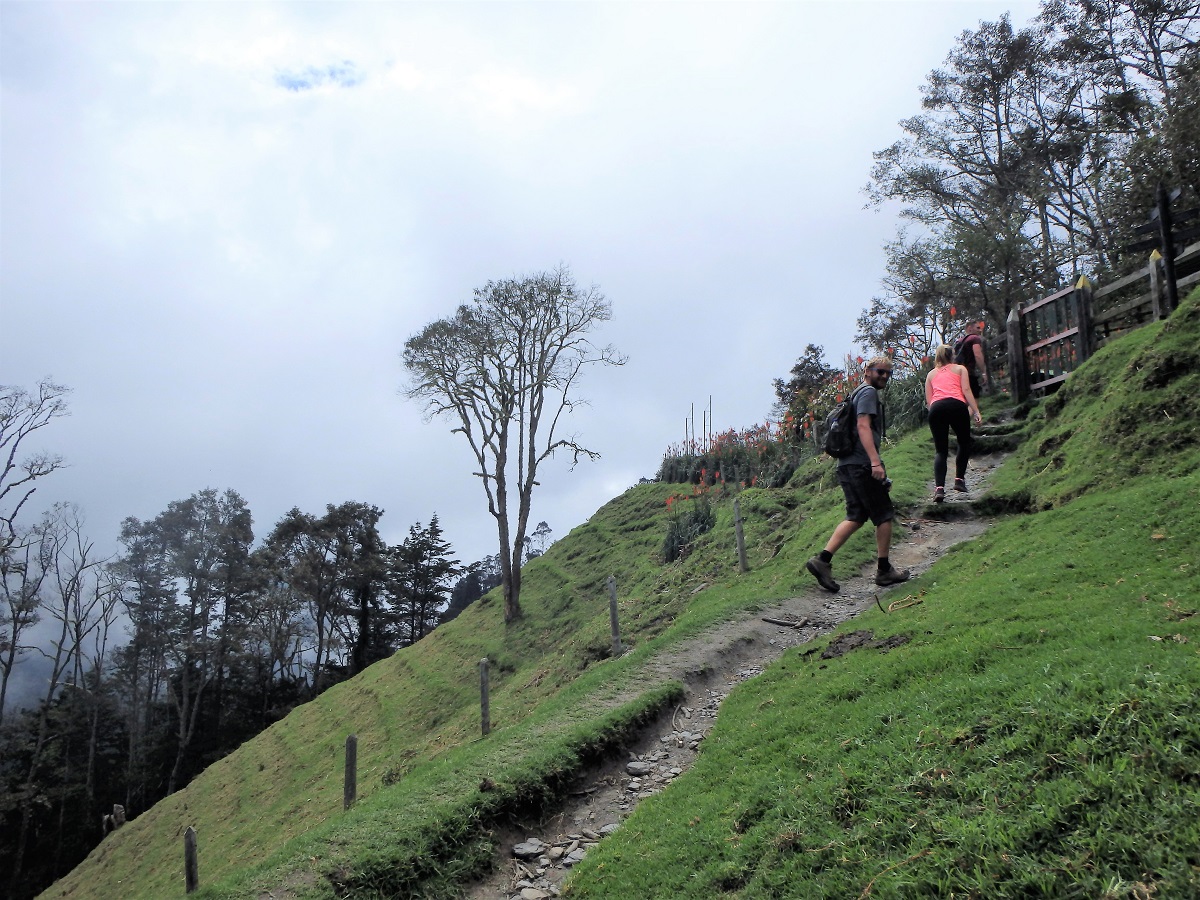
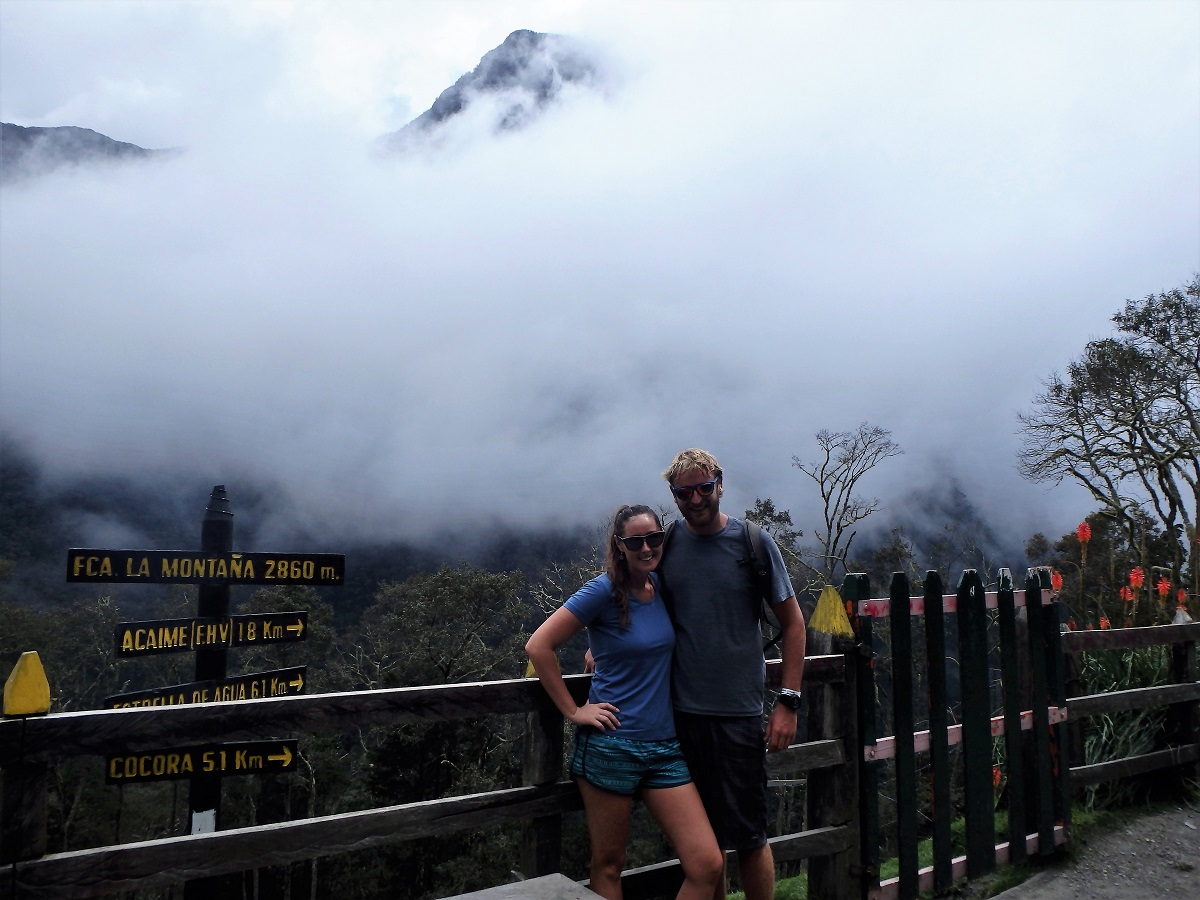
Since we began, it took us a little under 4 hours to reach this mountain top. It was such a rewarding feeling to make it however it was a tinsy bit gutting to find ourselves engulfed in a thick fog.
Luckily the clouds were moving pretty fast so there were moments when they would clear to reveal the insane landscape below.
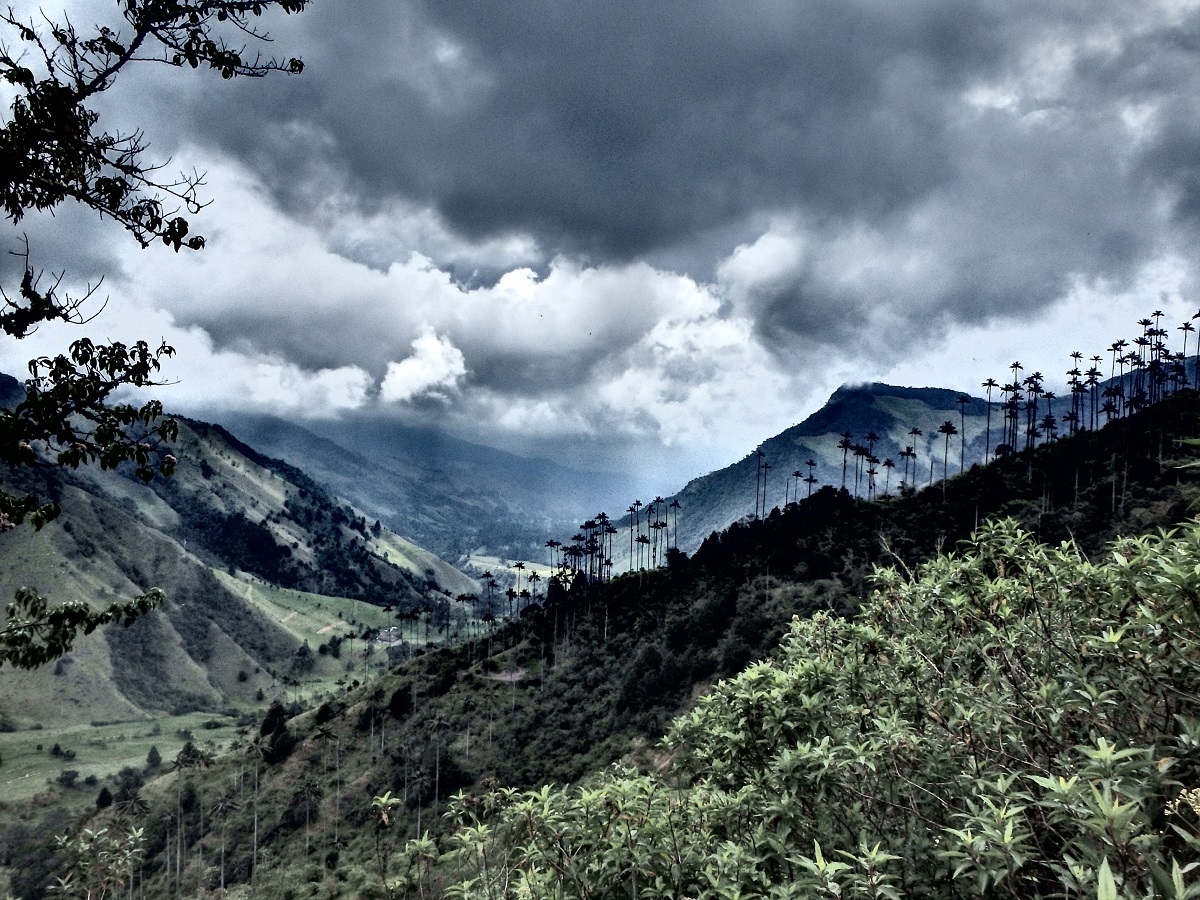
In addition to the beautiful views, we also got to marvel at the colossal wax palms that now towered over us. These are actually the tallest palm trees in the world and can grow to be over 60 metres tall!
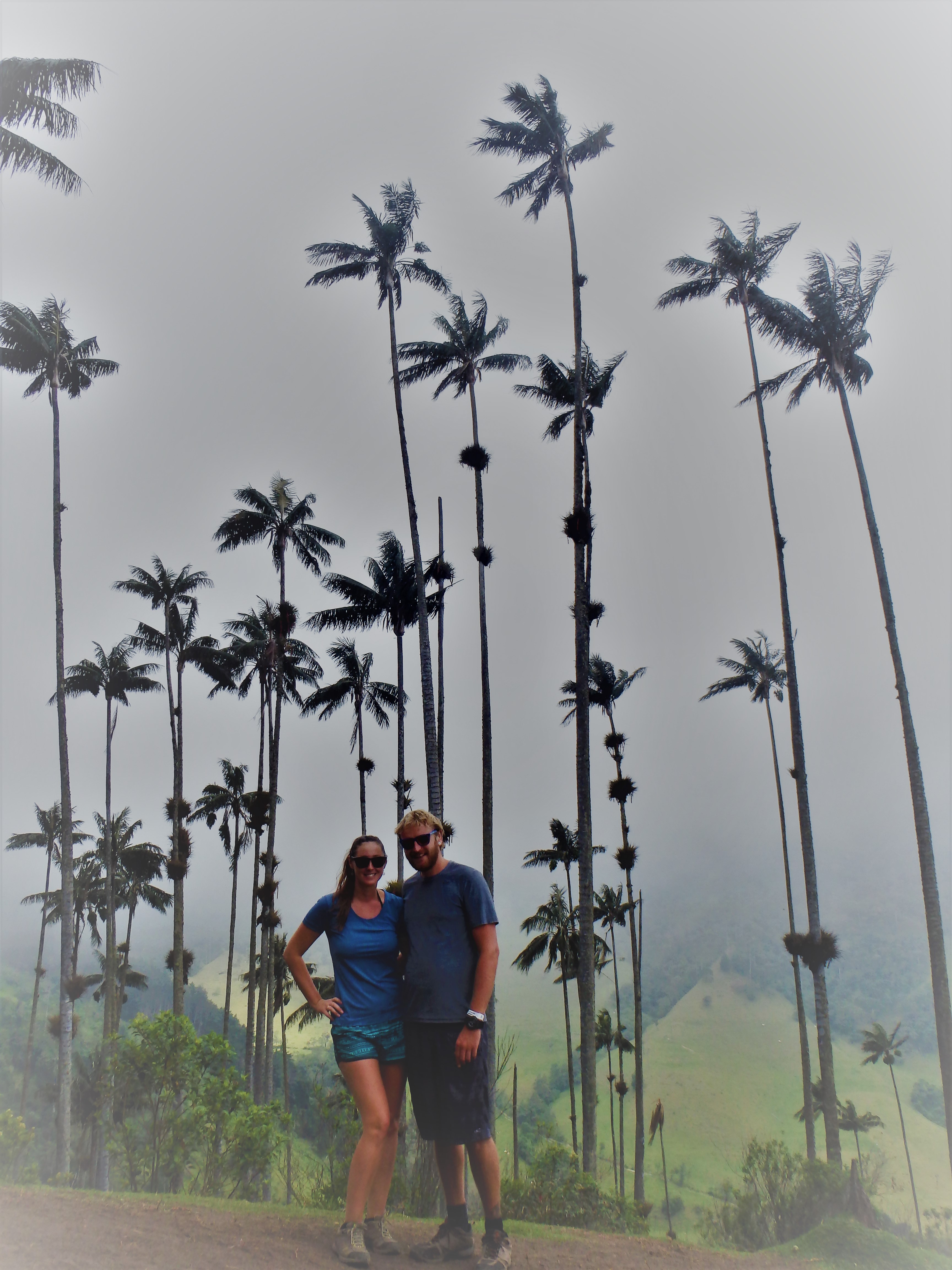
From the top it took us about 40 minutes to walk down. This part felt like a breeze compared to the last hour!
Making it back to the waiting collectivos was just the best feeling! Just grateful to rest our jelly-like legs, we waited around 15 minutes for our jeep to fill before we were driven back to town. Despite the shorted distance, we now each paid 5,000 COP ($1.50 USD) each. Go figure.
Note: The colletivos will only wait until around 5.30pm for hikers to return from the valley. Make sure you allow yourself plenty of time to make this deadline. After a brutal hike the last thing you want is to make the trek back to town.
Join a yoga class
Given Salento’s tranquility and idyllic landscape, backpackers would be hard pushed to take a mat outdoors in a better setting.
And you don’t have to be a regular ‘yogi’ to participate. Just see it as a way to try something new! I mean, all backpackers go to South America to experience something new, right?!
Despite this, and the fact that our class was held on the grass outside right our hostel, I could not convince Rhys to join. We ended up being a small class of just five, which actually made it even more perfect.
The hour class wasn’t super cheap – again, Colombian standards – at 17,000 COP ($6 USD) but for me, it was completely worth it. The instructor was awesome and he even gave the class in English.
The only downside was that my plan to stretch out my sore muscles from the Cocora hike did not work. I think instead I over-stretched the only ones that weren’t already hurting! Poor Rhys had to put up with some whinging for a couple of days, ha!
Have a camp fire
Such a simple pleasure and one of our favourite things. Campfires were a nightly occurrence at our hostel thanks to their designated fire pit. It was a key selling point in choosing this hostel to be fair.
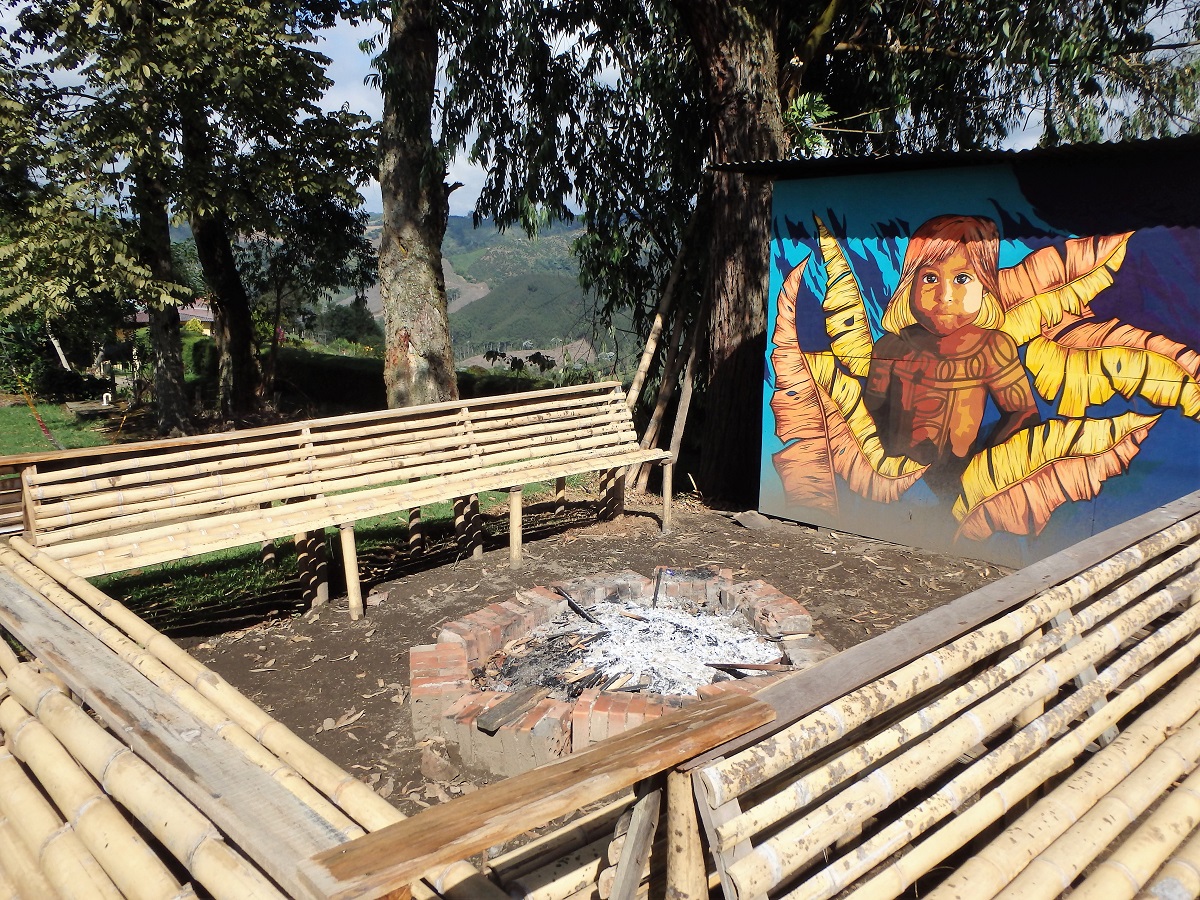
In addition to the simple joy that is ‘sitting around a fire in the great outdoors’, it is a great way to socialise. Backpackers to a campfire are like moths to a flame. I mean it is free! Except for the mandatory beers of course.
What to eat in Salento
Given its popularity as a tourist destination, there are quite the selection of restaurants in Salento.
Brunch de Salento offers more westernised fare such as burgers and pancakes. If you are feeling lazy, they will even provide you with a packed lunch that you can take hiking! Acaime (the restaurant) also has some great reviews and we were told it is great place to sample the local trout.
Don’t pass up the opportunity to sample a local empanada. I swear we chased down every vendor with a cart of them. They would even wait while we ate so we could sample all their delicious sauces! Our advice, always ask for picante.
If you want to relish the true ‘budget’ part of travelling, then you need to be able to cook for yourself. We visited a local grocer and purchased a massive bag of fresh vegetables. Totalling less than 3,000 COP ($1 USD), I honestly thought I had been over-changed at first. Bargain!
For nights when cooking or walking into town felt like hassle, our hostel offered a communal dinner (although ‘feast’ might be a more appropriate term).
It was a budget-stretching 18,000 COP ($6 USD) each, but there really was a ton of food and it was super delicious. It was also another great way to meet fellow backpackers at the hostel too.
Where to stay in Salento
Given Salento’s location, we were hard pressed to find somewhere that didn’t look amazing.
However the place that kept coming up again and again, appealing to us the most, was a La Serrana. It’s a bit further out of town than some of the other hostels but we saw that as part of the appeal.
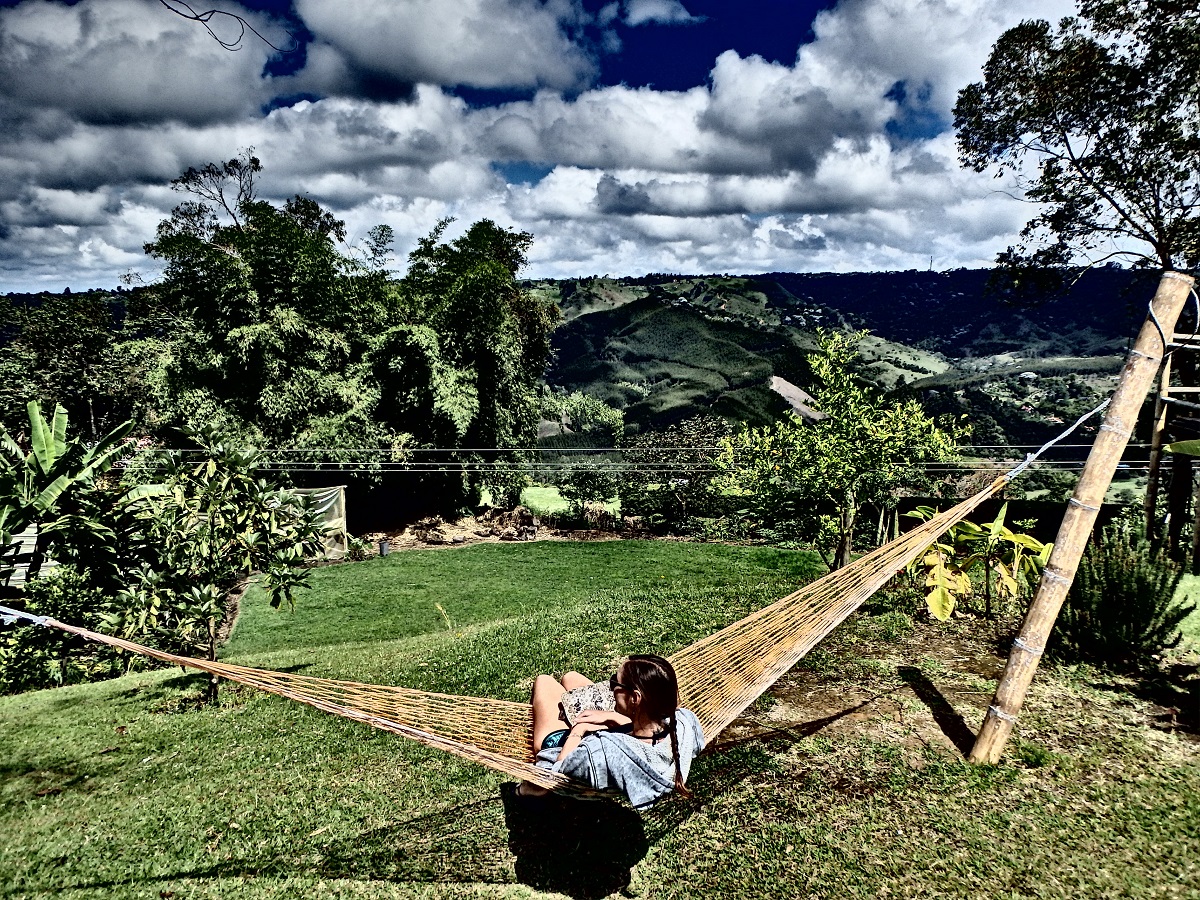
Panoramic views of the Los Nevados mountain range from their 20 acre eco-farm is alone reason enough to stay. Additional bonuses for us was the fire pit, cleanliness and a decent (albeit small) kitchen. Their breakfast is also okay, assuming you like eggs and fruit (damn my fussiness!).
We were happy to pay the 30,000 COP ($10 USD) each for a bed in an 9-person dorm, although I will note it was advertised as an 8-person room. A private was beyond our budget at 95,000 COP ($31 USD).
Note: As a budget guide to Salento we should include that you can walk to the hostel from the bus stop in town. It took us a tiring 30 minutes with full backpacks and was a little creepy walking down a desolate road in thick fog… we turned it into a mini adventure but be aware if you turn down the collectivo!
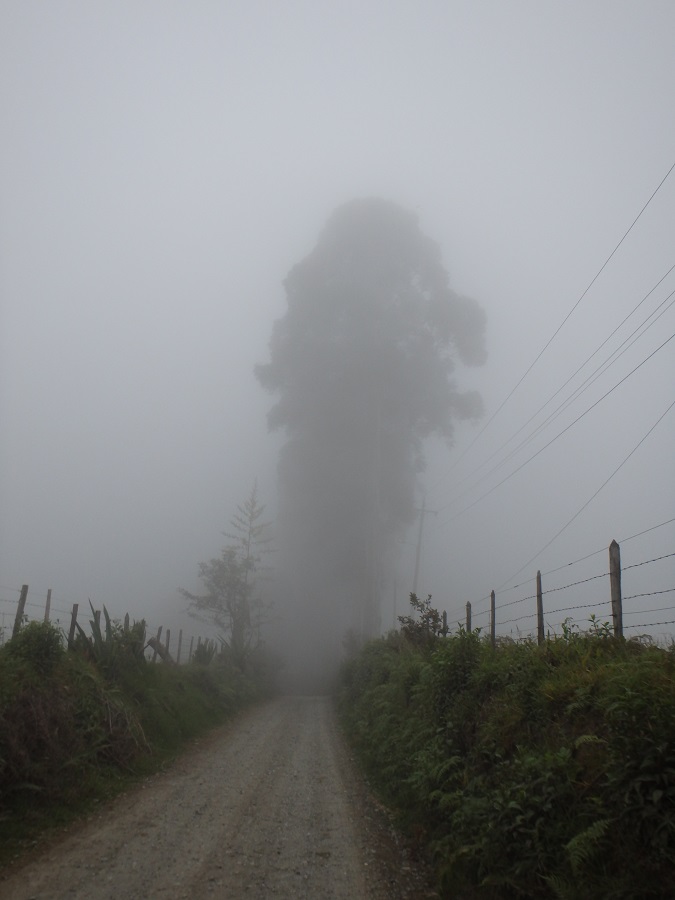
If you have a little more to spend again then the Coffee Tree Boutique Hostel also looks amazing. A similar serene setting but with an added grandeur. Plus it is only a few minutes walk from the town centre which would make life easier.
Getting to Salento
Salento is less than an hour bus ride from the larger town of Armenia, a massive transport hub within Colombia’s coffee region.
We managed to find a rare direct bus from Medellín to Salento however the non-direct with a quick change in Armenia is not too painful. Buses to Salento depart from Medellín’s South Terminal on a daily basis.
Our ride cost around 50,000 COP ($17 USD) for the 6+ hour journey. It felt a bit short for a night bus ride, so we boarded an early one at 9am.
If you are travelling north to Salento from Cali, then similarly you will likely need to make a change in Armenia. This journey takes around 7 hours and costs quite a bit less at just 30,000 COP ($10 USD) each.
We just encourage not to skip Salento for the sake of not finding a direct bus. This region of Colombia is honestly stunning and will be a memorable stop along any travellers journey. We hope our backpackers guide to Salento will see you planning your trip soon.
